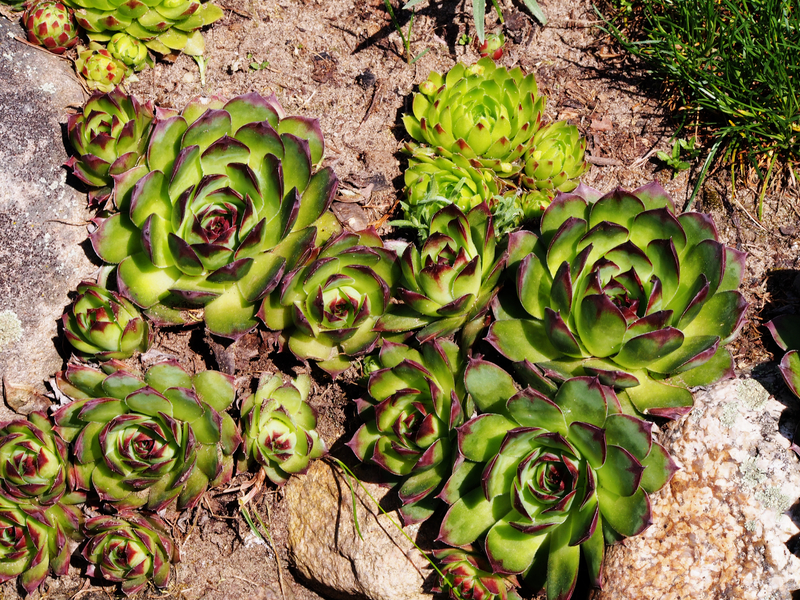Orchid Care Made Easy: Steps to Thriving Plants
Posted on 17/05/2025
Orchid Care Made Easy: Steps to Thriving Plants
Are you fascinated by the exotic beauty of orchids but worried about their care requirements? Orchid care doesn't need to be complicated or overwhelming. With the right guidance, anyone can enjoy thriving orchid plants that bloom year after year. In this detailed guide, we will cover everything you need to know to keep your orchids healthy and vibrant, from basic orchid care to advanced tips for getting the best out of these magnificent plants.

Understanding Orchids: What Makes Them Special?
Orchids (family Orchidaceae) are among the largest and most diverse plant families, with over 25,000 species and more than 100,000 hybrids. Their stunning flowers and unique growth habits make them popular in homes worldwide. However, orchids do have special care requirements, different from common houseplants, which is why understanding their nature is the first step toward easy orchid care.
- Epiphytic Orchids: Most popular orchids like Phalaenopsis (Moth Orchid) and Cattleya grow on trees in their native habitat, not in soil.
- Terrestrial Orchids: Some, such as Paphiopedilum (Lady's Slipper), grow in soil or leaf litter.
Knowing Your Orchid Species
Identifying your orchid species or hybrid is crucial because each variety has unique light, water, and feeding needs. The most common home orchids include:
- Phalaenopsis (Moth Orchid): Great for beginners, they bloom for months.
- Cattleya: Well-known for vibrant, showy flowers.
- Dendrobium: Versatile and often easygoing.
- Oncidium: Recognized for multiple small, often fragrant flowers.
- Paphiopedilum: Unique pouch-shaped blooms, generally easier indoors.
The Essentials of Easy Orchid Care
1. Choosing the Right Orchid Pot and Medium
Unlike other houseplants, orchids require a specialized potting mix that mimics their natural environment. The right choice is crucial for your orchid's root health.
- Potting Medium: Use a mix such as bark chips, sphagnum moss, charcoal, or perlite rather than standard soil.
- Pots: Select containers with good drainage--clear plastic orchid pots help monitor root health and moisture levels.
Tip: Repot orchids every 1-2 years to refresh the medium and promote healthy growth.
2. How Much Light Do Orchids Need?
Light is one of the most important factors in orchid plant care. Too little, and your plant won't bloom. Too much can burn the leaves.
- Most household orchids need bright, indirect sunlight. An east or west-facing window is ideal.
- If leaves are dark green, the orchid may need more light; if yellowish, too much light. Aim for light green leaves as a sign of healthy exposure.
- If natural light is insufficient, supplement with LED grow lights.
Avoid direct midday sun, which can scorch the leaves.
3. Proper Watering for Thriving Orchids
Watering is where many orchid owners struggle. The key to successful orchid care is neither to overwater nor underwater.
- Water your orchid when the top inch of the potting mix is dry, usually every 7-10 days in most homes.
- Use tepid water to avoid shocking the roots.
- Allow excess water to drain--do not let the pot sit in standing water as this causes root rot.
- Some growers prefer the "soak and dry" method: soak the pot in water for 15 minutes, then drain completely.
Tip: During active growth and bloom periods, orchids may need more frequent watering.
4. Humidity and Air Circulation
Orchids naturally thrive in environments with 50%-70% humidity.
- Increase humidity by placing a tray of pebbles and water under the pot, misting regularly, or using a room humidifier.
- Ensure gentle air movement around the plant to prevent fungal diseases--an oscillating fan works well.
Balanced humidity and airflow help orchid plants thrive.
5. Fertilizing Orchids for Lush Growth
Orchids benefit from regular but diluted feeding during their growth and blooming periods.
- Feed with a balanced orchid fertilizer--look for 20-20-20 or specifically labeled for orchids.
- Apply fertilizer at half-strength every 2-4 weeks during spring and summer.
- Flush the potting mix with plain water every fourth watering to prevent salt buildup.
Tip: Reduce or stop feeding during the orchid's winter rest period.
Common Orchid Care Mistakes and How to Avoid Them
Many beginners encounter challenges with orchid plant care, but understanding common pitfalls can prevent disappointment.
- Overwatering or underwatering: Stick to a consistent watering schedule and always check moisture levels before watering.
- Poor lighting: Ensure your orchid gets enough indirect sunlight, but avoid harsh midday glare.
- Wrong potting medium: Refresh and replace the potting mix every couple of years to avoid compaction and root suffocation.
- Neglecting humidity: Use trays or humidifiers, especially in winter months when indoor air turns dry.
- Ignoring pests: Check regularly for mealybugs, spider mites, and scale insects.
Seasonal Orchid Care: What to Do Throughout the Year
Orchids have seasonal care needs that change throughout the year. Adjusting your routine ensures robust, healthy orchid plants.
Spring & Summer
- Active growth period: Increase watering and feeding.
- Monitor for pests as heat and humidity rise.
- If your orchid grows vigorously, consider repotting now.
Fall & Winter
- Growth slows: Reduce watering frequency and fertilizer.
- Keep orchids away from cold drafts and heat vents.
- Increase humidity as indoor heating dries the air.
- Many orchids set buds for next season during winter.
How to Get Orchids to Bloom Again
One of the most rewarding aspects of orchid care is seeing your plant re-bloom. Here's how to encourage flowers season after season:
- Provide a rest period: Many orchids need a cooler and drier phase after flowering to initiate new blooms.
- Increase light exposure: Gently boost light levels after flowering, while avoiding direct sun.
- Fertilize sparingly: Use a bloom-boosting fertilizer (higher phosphorus) as buds start to form.
- Prune correctly: For Phalaenopsis, cut old flower spikes just above a node to encourage branching and potential rebloom.
Troubleshooting Common Orchid Issues
Even with the best orchid plant care, problems can arise. Quick intervention is key.
- Yellow Leaves: Often due to overwatering, insufficient light, or natural aging.
- Wilting or Droopy Leaves: Usually a sign of underwatering or root rot from bad drainage.
- No Flowers: Insufficient light, too much nitrogen, or lack of seasonal temperature change.
- Pests (Mealybugs, Aphids): Remove with alcohol-soaked cotton swabs and increase air circulation.
- Black spots or mold: Fungal infection from excess moisture or poor airflow--prune affected areas and improve environment.
Advanced Orchid Care Tips for Enthusiasts
When you're feeling confident with the basics, try these expert strategies to elevate your orchid care routine:
- Experiment with humidity: Some species like Vanda or Miltoniopsis thrive at higher humidity (70%+); try orchid display cases or humidity tents.
- Monitor root health: Healthy roots are plump and green or white--prune away any mushy, black, or brown roots during repotting.
- Try mounting: Epiphytic orchids can be attached to bark or wood slabs to simulate their wild environment--ideal for advanced growers.
- Track growth cycles: Keep a journal of when your orchids bloom, set new leaves, or require repotting. This customizes care to their unique pattern.
Decorating Your Home with Orchids
Orchids aren't just beautiful; they're versatile decor elements. Use these suggestions to showcase your thriving orchid plants:
- Place on windowsills: East-facing windows give the best light for most varieties.
- Create an orchid arrangement: Group several orchids with similar care needs for a lush display.
- DIY orchid terrariums: Ideal for mini species and those needing high humidity.
- Use decorative pots: Slip clear orchid pots into ceramic containers with drainage to blend function and flair.

Frequently Asked Questions: Orchid Care and Maintenance
How do I know if my orchid needs water?
Feel the potting medium: If the top inch feels dry, it's time to water. Clear pots also make it easy to see root color--white roots need water; green ones are hydrated.
Why are the leaves turning yellow?
Yellow leaves can signal overwatering, excessive light, or natural old leaf shedding. Assess root condition and adjust watering and light as needed.
Can I use ice cubes to water orchids?
While some retailers recommend this, it's not ideal; orchids dislike cold roots. Instead, use room-temperature water and allow it to drain thoroughly.
How often should orchids be repotted?
Every 1-2 years--or when the potting medium breaks down, roots outgrow the pot, or pests/diseases are present.
Are orchids toxic to pets?
Most common orchid varieties (Phalaenopsis, Cattleya, Dendrobium) are non-toxic to cats and dogs.
Conclusion: Orchid Care Made Simple for Everyone
With these easy orchid care steps, anyone can enjoy lush, healthy, long-lasting flowers at home. Remember the four pillars: proper potting, good light, consistent watering, and high humidity. Start with forgiving varieties like Phalaenopsis, and soon you'll be confidently adding rare species to your collection.
Orchid care made easy is about observing your plant, learning its cycles, and adjusting your approach as needed. With patience and the tips in this guide, your orchid plants will reward you with stunning blooms and vibrant growth for years to come.
For more information and advanced tips, consider joining local orchid societies or online groups--sharing stories and advice is part of the joy of growing these remarkable plants!

